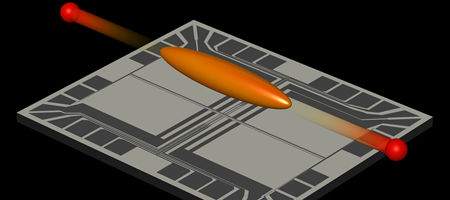Physicists at the Vienna University of Technology have succeeded in creating correlated quantum twin atoms using ultracold Bose-Einstein condensates.

Quantum particles, even if at a distance from one another, can ‘share’ certain physical properties. In the past, they’ve been created only as pairs of photons.
“This does not mean that by manipulating one particle we can at the same time change the other, as if they were connected by an invisible thread,” says Professor Jörg Schmiedmayer. “But still, we have to treat both particles as one single quantum system – and that opens the door to fascinating new experiments.”
The scientists first created a Bose-Einstein condensate, a state of matter that occurs at extremely low temperatures, meaning the atoms are in the lowest possible energy state. Atoms can be manipulated with incredible precision, allowing single quanta of vibrational energy to be delivered to the atoms of the ultracold Bose-Einstein condensate.
When the atoms return to the lowest energy state, the condensate has to get rid of the surplus energy.
“Because of the sophisticated design of our atomchips, the Bose-Einstein condensate is left with only one single way to dispose of its energy: emitting pairs of atoms. All other possibilities are forbidden by quantum mechanics,” says Robert Bücker.
According to the law of momentum conservation, the two atoms move in exactly opposite directions. They are quantum mechanical copies of each other and only differ by their direction of motion, forming one common quantum object.
“We are going to use these atoms for exciting new experiments. A fascinating new field of research is opening up which new insights and possible applications will evolve from,” says Schmiedmayer.
“This cannot yet be foreseen. It is conceivable that these correlated atom beams will lead to new quantum measurement methods, with a precision far beyond the scope of classical physics.”






